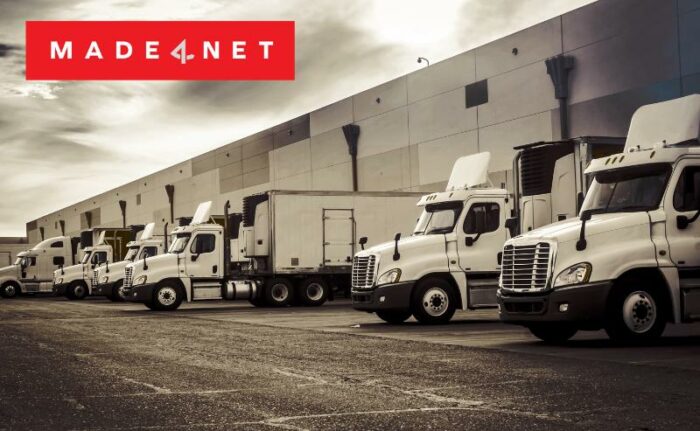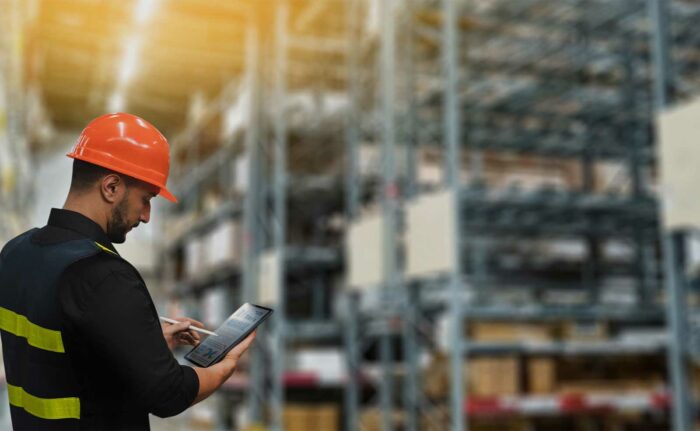
At first glance, the connection between a company’s Warehouse Management System (WMS) and last-mile delivery might not be obvious. Isn’t last-mile delivery handled in the Transportation Management system (TMS)? It commonly is, but the WMS plays a foundational role in making sure deliveries go off without a hitch, helping maintain customer experience and reducing delivery errors.
How does the WMS play into last-mile delivery? Here are some of the key WMS functions in last-mile delivery.
In this article, we’ll cover:
- Top 3 Features of the Best Last-Mile Delivery Software
- Load Sequencing
- Inventory Management
- Integration Capabilities
- The Benefits of Leveraging a WMS for Last-Mile Delivery Needs
- Better Visibility
- More Efficiency
- Less Paperwork
- Improved Accuracy
- Easier Returns
- Improved Customer Experience
Here are some of the key WMS functions in last-mile delivery.
The Best Last-Mile Delivery Software Features in a WMS
Last-Mile Delivery Feature #1: Load Sequencing
Route planning doesn’t generally happen in the WMS, but those route plans must be considered during loading to ensure orders are loaded with the last stop at the nose of the trailer and the first stop at the tail of the trailer, with each order in between also being loaded in a reverse sequence of the route plan.
The correct loading plan for the outbound trailer allows the driver to conduct last-mile delivery to the right customer in the most efficient way possible. The driver isn’t stuck searching through the truck for pieces of an order – each order is right there at the end of the trailer as they get to their respective stops.
Last-Mile Delivery Feature #2: Inventory Management
As items are loaded and subsequently delivered, a WMS is ideally keeping track of inventory, which includes product that is still in the warehouse, product that is out for delivery, and product that is either on its way or has come back to the warehouse as a return.
Inventory management that feeds from the WMS to the last-mile delivery system also allows the driver to know exactly what items are on the truck and which items are to be dropped with each order. It provides all the information they need to deliver orders effectively.
Last-Mile Delivery Feature #3: Key Integrations
For each system in the tech stack to function at its peak, it’s critical that each piece is deeply integrated with all the others. Data needs to be able to flow back and forth with no hang-ups to provide a real-time view throughout the supply chain.
The Benefits of Leveraging a WMS for Last-Mile Delivery Needs
Last-Mile Delivery Capabilities in Your WMS Offer Better Visibility
End-to-end visibility is something most supply chains are aiming for, but more than half of companies are still struggling to attain true end-to-end visibility according to a recent ACSM report. Internal silos were reported to be one of the biggest hang-ups companies faced. When the WMS and last-mile delivery system are connected, it allows companies to track inventory from the dock door to the customer’s door, giving them a better view.
More Efficient Loading Saves on Transportation Costs
When a truck is loaded efficiently based on optimized routing, companies can save time and money in last-mile delivery, labor, and fuel costs. Drivers don’t take as long to deliver when orders are loaded in the reverse of the delivery order so that they’re easy to access and unload.
Less Paperwork
Electronic Proof of Delivery (POD) can save a substantial amount of paperwork on both the warehouse and delivery sides. Rather than paper forms that must be filled out and signed, then returned to the warehouse via various methods including hand delivery, fax, or email, the driver can simply use a hand-held device to electronically send proof of delivery. It automatically comes back, in real time, into the WMS (and the TMS), so all stakeholders know the order has been accepted by the customer.
Improved Delivery Accuracy
When orders are scanned before loading at the warehouse, loaded intuitively and then scanned as they are removed from the trailer upon delivery, it’s guaranteed that the correct items are going to arrive at the customer.
Returns are Easier to Manage
An advanced WMS that takes last-mile delivery into account can make returns easier to manage. For example, it enables the driver to handle returns on-site with returns management authorization documentation, pushing the information back to the WMS and supporting the product receipt back to the warehouse so it can be processed appropriately. This means the customer doesn’t need to go out of their way to send the product back.
Improved Customer Experience
Every benefit listed above leads directly to increased service and a better customer experience. The end customer may save on shipping costs when transportation costs are reduced. The customer can get a clear view of what products they ordered and what the driver is delivering in real-time via hand-held, and it will be more likely that they are receiving exactly what they ordered. They can send the product back immediately with the driver if it isn’t right or is damaged in some way, if returns can be managed at delivery.
At the end of the day, whether a company is B2B or B2C, big or small, everything that we do is to serve the customer better while, ideally, still turning a profit. Integrating the warehouse management system into the last-mile delivery system is a small step companies can take to achieve a better customer experience while saving money. Oh, and one other important thing – it helps us all be greener with less paperwork.


